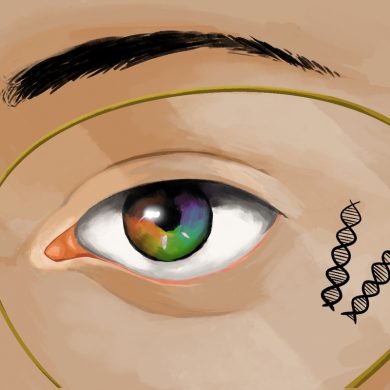What we can do with the fusion of biology and technology is staggering. Mapping out the entire human genome, detecting cancer from a single drop of saliva, and regenerating nerves that would have previously been lost forever are just a few of the results that come up when you do a Google search on biotechnology breakthroughs. As you go on, however, more disturbing, more unsettling, and more concerning results come up. A significant issue and one worth considering is how outrageous fantasies are turning into treacherous realities. The problem is going from headless mice to headless men. It is going from cryogenically freezing and reviving an entire rabbit brain to freezing a human corpse in the same manner, all in the hopes of artificially reviving it someday.
The conundrum that arises is: how far do we go? What is our glass ceiling and is it really a good thing to shatter it? Exactly how high can our insatiable curiosity and ambition take us? That, I would venture, is the biggest issue that arises from biotechnology—figuring out the limit. It is where we need to step in—draw boundaries where there are none and mark the line where it is fuzzy. While limits may seem restricting, constricting, and hindering the full potential of biotechnology, they prevent unforeseeable and catastrophic consequences.
Now drawing these boundaries is easier said than done, of course, but it can be addressed from social justice, public policy, and ethical standpoints. Together these analyses can formulate the best limits to reach for but never exceed. Moreover, the primary factor we should consider to set these limits is the human element. We need a certain humanistic element to learning, to hospitality, to healthcare since robots cannot take over no matter how imminent it seemed in Terminator.
To set limits, the appropriate regulatory system has a plethora of factors to consider but at the top of the list is weighing the costs, risks, and benefits against each other to figure out which of the three tops the rest and sets agenda. Ultimately, a cautious approach for biotechnology is beneficial. In this approach, the regulatory system imposes several regulations on applications of biotechnology.
Let us look at a specific example to examine how this can be done. One hypothetical is just as thought provoking today as it was when it first emerged: would you alter your child’s DNA if you could? Well, today it is possible with CRISPR-Cas9 technology. This biotechnology makes it possible to modify the genome in fertilized animal eggs or embryos. The genetic makeup of every differentiated cell in the organism is altered so that the changes would be passed on to the organism’s progeny (Genetic Engineering and Biotechnology News). When we add in disease-curing applications, human genetic engineering becomes precariously set on the “slippery slope” toward germline gene modification, with unpredictable consequences. If we can tinker with genes to prevent illnesses later on, what is stopping us from creating super-humans who could come right out of a Superman comic? What would remain human in humans if we went that far?
That is where the limit needs to come in from an ethical perspective, but taking into consideration other perspectives would only serve to strengthen guidelines to prevent biotechnology from going too far. For this, members from the research community, relevant industries, medical centers, and the public would all need to come together to discuss a prudent path forward for genomic engineering and germline modification. These members would discuss what constitute responsible uses of genome engineering.
Limitations mean that the word “clone” will not usher in a wave of Brave New World anxiety; instead it will herald faith and assurance that we will not be going too far. These limitations would in no way target the bulk of biotechnology; instead, they would target the more Frankenstein-ian experiments. Let’s leave that in novels.
